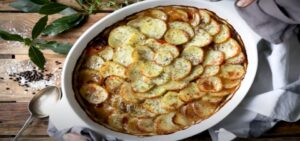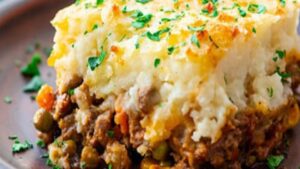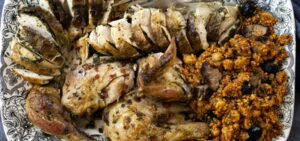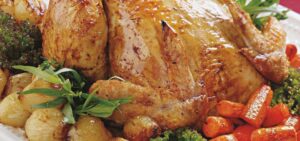How to Cook Authentic Lancashire Hotpot Like a Pro Chef
How to Cook Authentic Lancashire Hotpot
Lancashire Hotpot is one of the most celebrated dishes in British culinary history. Starting in the mechanical heartlands of Northern Britain, this dish is a image of effortlessness, warmth, and consolation. It has been served in homes over Lancashire and past for eras, with each family advertising its claim one of a kind variety of this healthy meal.
In this article, we will investigate how to get ready a genuinely true Lancashire Hotpot utilizing conventional strategies and fixings, whereas too looking into the beginnings and centrality of the dish.
History and Beginnings of Lancashire Hotpot

Lancashire Hotpot has a long and storied past, dating back to the 18th century. It was well known with the working classes in Northern Britain, especially those working in the material plants. The reason for its ubiquity lay in its straightforwardness and the truth that it might be arranged in the morning and cleared out to cook gradually all through the day, permitting families to come domestic to a generous, prepared dinner after long hours of work.
Traditionally, the dish is made with sheep, onions, and cut potatoes. These fixings were staples of the locale, and their plenitude made the dish an temperate choice for families. As the dish gradually cooked, the flavors melded together, making a comforting feast that was both filling and delicious.
Ingredients for an Bona fide Lancashire Hotpot
To make an bona fide Lancashire Hotpot, you’ll require a modest bunch of basic however quality fixings. The enchantment of the dish lies in its straightforwardness, so be beyond any doubt to source the best you can find.
Essential Ingredients:

1.5 kg sheep neck or bear (bone-in or boneless)
Lamb is the star of the Lancashire Hotpot, and cuts like neck or bear are perfect since they have sufficient fat and connective tissue to ended up delicate and flavorful amid moderate cooking.
1.5 kg waxy potatoes (such as Desiree or Charlotte)
The potatoes serve as both a generous layer inside the hotpot and the firm topping that makes the dish outwardly engaging and texturally satisfying.
2 expansive onions
Onions give sweetness and profundity to the hotpot, superbly adjusting the wealthy lamb.
2-3 sheep kidneys (optional)
For the traditionalists, sheep kidneys include an hearty, gamey flavor to the dish, in spite of the fact that this is an discretionary expansion that not all cooks include.
500 ml sheep or hamburger stock
Homemade stock is best, but a good-quality store-bought one will work. The stock is pivotal for making the impudent, wealthy insides of the hotpot.
A few sprigs of new thyme and 2 inlet leaves
These herbs grant the dish its unmistakable fragrance.
50 grams butter
For dabbing over the potato cuts some time recently heating to accomplish that culminate golden-brown crust.
Salt and pepper to taste
Step-by-Step Direct to Cooking Lancashire Hotpot

Step 1: Get ready the Meat and Vegetables
Trim the Sheep: Trim any overabundance fat from the sheep, but be beyond any doubt to take off a few on, as this will render amid cooking and include flavor to the dish. If utilizing sheep kidneys, clean and cut them, evacuating the core.
Slice the Vegetables: Peel the potatoes and cut them into rounds approximately 1/4 inch thick. Guarantee that all the cuts are indeed to guarantee uniform cooking. Cut the onions into lean rounds or half-moons, as they will cook down and sweeten the dish.
Step 2: Layer the Ingredients
Start with the Sheep: In a huge, ovenproof casserole dish, put a layer of sheep at the foot. Season liberally with salt, pepper, and thyme.
Add Onions and Potatoes: Layer the cut onions on best of the sheep, taken after by a layer of cut potatoes. Proceed layering sheep, onions, and potatoes, flavoring each layer as you go.
Finish with Potatoes: The last layer ought to be potatoes, organized flawlessly on best of the casserole in covering cuts. This will shape the brilliant, fresh topping characteristic of a great Lancashire Hotpot.
Step 3: Include the Stock and Bake
Pour in the Stock: Gradually pour the sheep stock over the layers, guaranteeing that the fluid comes to around midway up the dish. This will keep the sheep wet as it cooks whereas permitting the best layer of potatoes to stay dry and crispy.
Butter the Potatoes: Dab the best layer of potatoes with little pieces of butter. This will offer assistance them turn brilliant and fresh in the oven.
Bake the Hotpot: Preheat your broiler to 160°C (320°F). Cover the casserole dish with a cover or thwart, and heat in the stove for 2 to 2.5 hours. After this time, the sheep ought to be delicate and the potatoes cooked through.
Crisp the Best: Expel the cover or thwart, increment the stove temperature to 200°C (400°F), and heat for an extra 30-45 minutes, or until the best layer of potatoes is brilliant brown and fresh.
Step 4: Serve Your Lancashire Hotpot
Once the hotpot is cooked and golden, remove it from the oven and let it rest for about 10 minutes before serving. This will allow the juices to settle, making it easier to serve.
Tips for the Perfect Lancashire Hotpot

- Use the Right Cut of Lamb: Cuts like neck or shoulder are ideal for slow cooking, as they have enough fat to keep the meat moist. Lean cuts of lamb are not recommended, as they can dry out during the long cooking time.
- Don’t Skimp on the Potatoes: The potatoes are as important as the lamb in this dish. Use a waxy variety, which will hold their shape and provide the right texture. Floury potatoes tend to break down and become mushy.
- Consider Using a Heavy Casserole Dish: A heavy, cast-iron casserole dish is ideal for making Lancashire Hotpot. It retains heat well and ensures that the dish cooks evenly.
- Homemade Stock Makes a Difference: If possible, use homemade lamb stock for the best flavor. You can make this by simmering lamb bones with vegetables and herbs for a few hours before starting the hotpot.
- Add a Modern Twist: While traditionalists might shudder at the thought, you can add a little Worcestershire sauce or even a splash of dark ale to the stock for extra depth of flavor.
Variations of Lancashire Hotpot
Lancashire Hotpot is a dish that has evolved over time, with many families adapting the recipe to suit their tastes or what they have on hand. Here are a few variations:
- Beef Hotpot: If lamb isn’t available or preferred, beef is an excellent alternative. Cuts like brisket or chuck work well as they become tender during slow cooking.
- Vegetarian Hotpot: For a vegetarian version, omit the lamb and replace it with hearty vegetables like leeks, mushrooms, and root vegetables. Vegetable stock will replace the lamb stock, and you can still top it with buttery potatoes.
- Lancashire Hotpot with a Pastry Crust: In some regions, cooks like to add a shortcrust pastry topping in addition to or instead of the potatoes. This makes the hotpot even more filling and gives it a pie-like quality.
Conclusion: A Timeless Classic
Lancashire Hotpot is not just a dish—it’s a piece of British history, offering a window into the culinary traditions of the North of England. Its simplicity, affordability, and flavor make it a favorite in homes around the world, even today.
By following these steps, you’ll have an authentic Lancashire Hotpot that’s rich, comforting, and perfect for cold evenings or family gatherings. Whether you’re making it for the first time or revisiting a childhood favorite, Lancashire Hotpot is a timeless classic that will never go out of style.






















